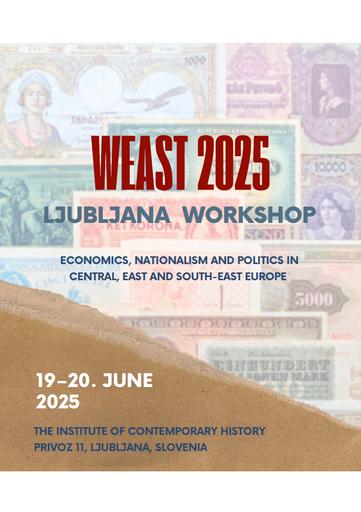/
Dogodki
/
Konference
Discourses regarding foreigners in a Slovenian newspaper during the 1930s in the Kingdom of Yugoslavia


To delo avtorja Neja Blaj Hribar je ponujeno pod Creative Commons Priznanje avtorstva-Nekomercialno-Deljenje pod enakimi pogoji 4.0 Mednarodna
Datoteke (1)
Opis
Following World War I, the Kingdom of SHS/Yugoslavia exhibited legislative aspects of economic nationalism, which was not uncommon for Eastern Europe at the time. As early as 1922, a labour protection decree was issued that restricted foreign employment while permitting the expulsion of previously immigrated individuals. Using administrative processes, work permits were also (not) granted based on the ethnicity of the applicant. This kind of ethnic favouritism was also evident in the citizenship law. According to the 1920 decree, anyone who had a pertinency within the boundaries of the newly established state in 1918 could apply for it, as could anyone who could demonstrate that they were Slovenes, Croats, or Serbs by language and origin. According to the 1928 Citizenship Act, for example, priority was also given to “other” Slavs, who could apply for it after twenty years of residence or after five if they were in the civil service, while the rest needed 30 years of residence in the country. Legally speaking, it is mostly obvious who is and is not a foreigner. When we discuss images of foreigners in public discourse, it is a whole other matter. A foreigner is a historically fluid concept of culture and society that varies according to social standing, politics, and economics. Therefore, I will initially analyse who the foreigners in the newspapers were, how they were treated, and whether or not there are any differences based on their ethnicity. My focus will be on the discourses of the work force and the ownership of the means of production. Since public opinion and political discourse heated up during the economic crisis, I will concentrate on that period. In the paper, I will discuss the Slovenian case, but I will do so within a broader regional context.
Metapodatki (12)
- identifikatorhttps://hdl.handle.net/11686/71111
- naslov
- Discourses regarding foreigners in a Slovenian newspaper during the 1930s in the Kingdom of Yugoslavia
- avtor
- Neja Blaj Hribar
- soavtor
- Nataša Henig Miščič (mod.)
- predmet
- Jugoslavija
- Kraljevina Jugoslavija
- časniki in časopisi
- opis
- Following World War I, the Kingdom of SHS/Yugoslavia exhibited legislative aspects of economic nationalism, which was not uncommon for Eastern Europe at the time. As early as 1922, a labour protection decree was issued that restricted foreign employment while permitting the expulsion of previously immigrated individuals. Using administrative processes, work permits were also (not) granted based on the ethnicity of the applicant. This kind of ethnic favouritism was also evident in the citizenship law. According to the 1920 decree, anyone who had a pertinency within the boundaries of the newly established state in 1918 could apply for it, as could anyone who could demonstrate that they were Slovenes, Croats, or Serbs by language and origin. According to the 1928 Citizenship Act, for example, priority was also given to “other” Slavs, who could apply for it after twenty years of residence or after five if they were in the civil service, while the rest needed 30 years of residence in the country. Legally speaking, it is mostly obvious who is and is not a foreigner. When we discuss images of foreigners in public discourse, it is a whole other matter. A foreigner is a historically fluid concept of culture and society that varies according to social standing, politics, and economics. Therefore, I will initially analyse who the foreigners in the newspapers were, how they were treated, and whether or not there are any differences based on their ethnicity. My focus will be on the discourses of the work force and the ownership of the means of production. Since public opinion and political discourse heated up during the economic crisis, I will concentrate on that period. In the paper, I will discuss the Slovenian case, but I will do so within a broader regional context.
- založnik
- Inštitut za novejšo zgodovino
- datum
- 19. 06. 2025
- tip
- video
- jezik
- Angleščina
- jeDelOd
- pravice
- licenca: ccByNcSa
